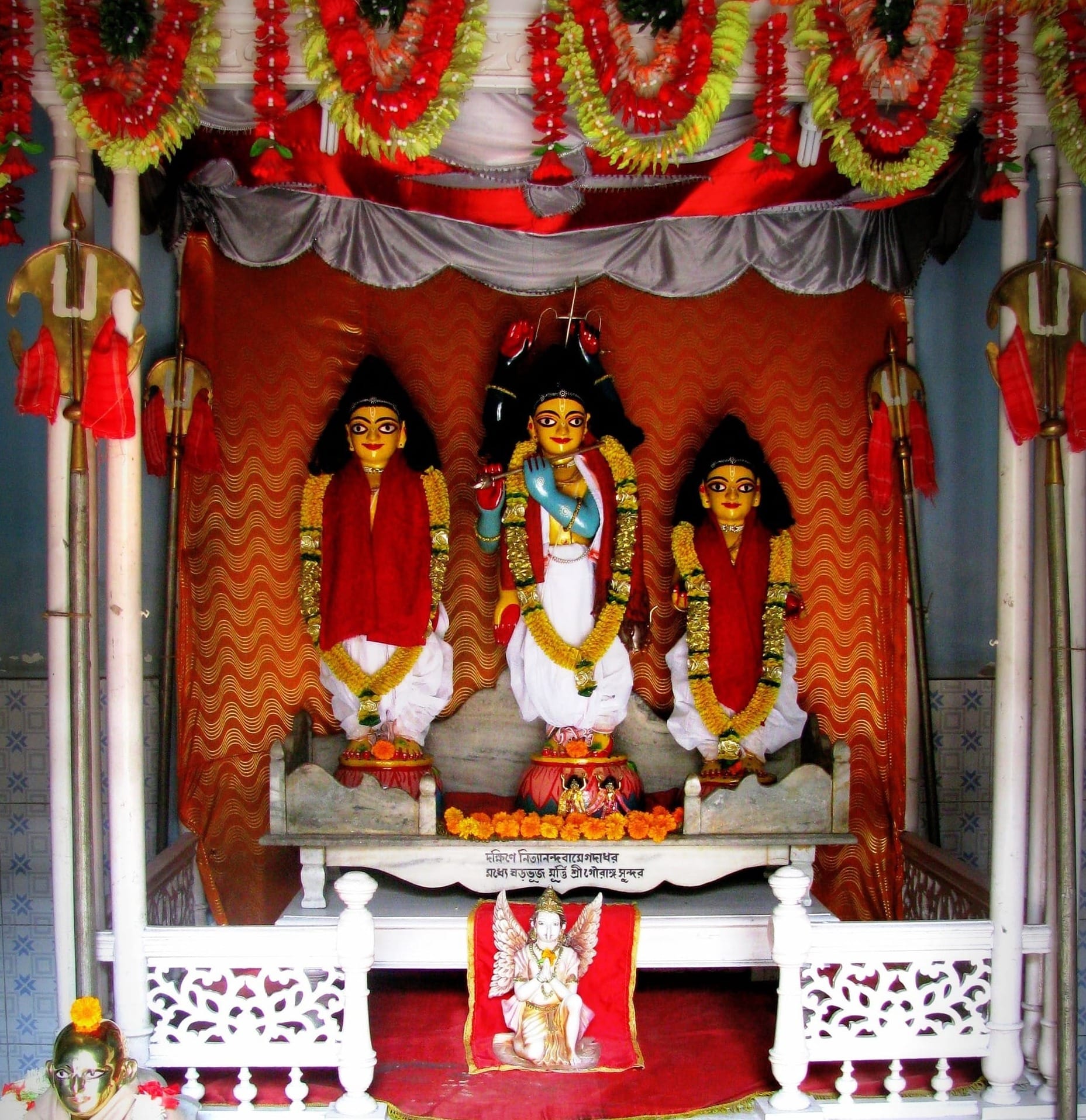Śrī Uddhāraṇa Datta Ṭhākura
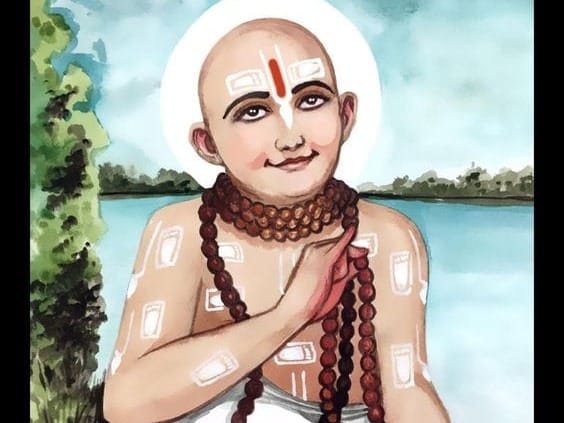
Fall of the Subarṇa-Baṇiks
Ballāla Sena became the king of Gauḍa around 1119 CE. His kingdom had three prominent cities: Gauḍa, Suvarṇa-grāma, and Navadvīpa. In Suvarṇa-grāma lived the Subarṇa-Baṇiks (gold merchants). Their leader was Ballabhānanda Āḍya, who at one point refused loans to King Ballāla Sena who was, apparently, an extravagant spender. Some time later, the king invited everyone, of all castes, to a grand celebration. The Subarṇa-Baṇiks were also invited and came, but saw that they were being discriminated against and fed in a separate part of the dining hall, so they left without eating. The king’s favorite, one Bhīmasena, who already had a grudge against Ballabhānanda, came to know of this slight and leveraged the situation to have a royal decree made against the whole Subarṇa-Baṇik community. Announcers were sent out beating gongs in the markets and on the roads, declaring that, from that day onwards, the Subarṇa-Baṇiks were śūdras and that their wearing of the sacred thread was meaningless.
Many of the Subarṇa-Baṇiks were deeply religous and dignified. Seeing the impending ostracism of their caste, they left Ballāla’s kingdom with their wealth and families. Many of them settled in Saptagrāma, which had a strong economy then. In Dhaka, in Suvarṇa-grāma, the Subarṇa-Baṇik community was systematically disgraced. King Ballāla had their yajña-sūtra (sacred threads) cut off. I [Śrī Dīnanātha Dhara] have personally seen the poisonous discrimination the Brāhmaṇa, Vaiśya, and Kāyastha people have towards the Subarṇa-Baṇiks. Today there are very few influential members of the Subarṇa-Baṇik community left in Dhaka. After 800–900 years of being kneaded under the heels of a society, it is not surprising that a community would deteriorate. There is also surely a noticeable difference between the Subarṇa-Baṇiks of this region (Chunchura, Hooghly, Calcutta, etc.) and those of Dhaka. And the main reason for this is, arguably, the coming of Nityānanda Prabhu.
Facing the ostracism in Dhaka, the Subarṇa-Baṇik community spread out all over India, going as far as Gujarat to resettle. There, even today, their descendants follow ancient vaiśya traditions and wear the sacred thread. The same was true for those who settled in Saptagrāma, until, supposedly, Nityānanda Prabhu came. In this context, Hārādhana Datta Mahāśaya, a descendant of Uddhāraṇa Datta Ṭhākura, tells of a story that is told in their family:
One day, Nityānanda Prabhu asked Uddhāraṇa Datta: “Uddhāraṇa! Have you read Padma Purāṇa?”
Uddhāraṇa said, “No.”
So Nityānanda Prabhu quoted the following two verses from the Purāṇa:
“kṛṣṇa-mantra-praveśena māyā-dehasya nāśataḥ |
kṛpayā gurudevasya dvitīyo janma kathyate ||
tulasī-kāṣṭha-sambhūtāṁ yo mālāṁ vahate naraḥ |
phalaṁ yacchati daityāriḥ pratyahaṁ dvārakodbhavaḥ ||”
Once Kṛṣṇa’s name has entered the heart of the jīva, why would he need to wear a sacred thread? Tulasī-māla is enough for Kṛṣṇa devotees. They do not need to wear the upavīta, which may be merely a symbol of caste pride. It is said that after this interaction with Nityānanda Prabhu, Uddhāraṇa Datta Ṭhākura and his acquaintances gave up their sacred threads. Members of the Subarṇa-Baṇik community in Bengal are generally devotees of Śrī Gaurāṅga and regard themselves as sold servants of Śrī Nityānanda Prabhu. It was on His order that they gave up their brāhmaṇa threads and, till this day, do not usually wear them.
Umāpati Dhara and Family
Umāpati Dhara’s name is one of considerable recognition in Indian poetry. He is said to have been one of the jewels in the court of King Lakṣmaṇa Sena as well as the king’s counselor. Umāpati Dhara was the son of Kāñjilāla Dhara of Suvarṇa-grāma. Kāñjilāla Dhara’s sister, Bhagavatī Devī, was married to Bhaveśa Datta Mahāśaya, who was Uddhāraṇa Datta’s ancestor by ten generations. This Bhaveśa Datta had a son named Kṛṣṇa Datta, who is of some renown as well.
Facing ostracism at the hands of Ballāla Sena, the dignified Bhaveśa Datta and his wife Bhagavatī Devī went to Mithilā. Later, when Lakṣmaṇa Sena ascended the throne of Gauḍa, Kāñjilāla Dhara was thinking to join his sister in Mithilā along with his son, Umāpati Dhara. Lakṣmaṇa Sena found out about this and, fearing the loss of his favourite counselor, sent a royal messenger to Bhaveśa Datta, asking him to consider returning to Suvarṇa-grāma. When Bhaveśa Datta received this letter, he sent his son Kṛṣṇa Datta to meet with the king. When Kṛṣṇa Datta met with the king, he was asked to deliver an explanation of Gīta-govinda to the assembly, which he did, first explaining it as pertaining to Kṛṣṇa and then as pertaining to Śiva. The assembly was captivated. This commentary on Gīta-govinda by Kṛṣṇa Datta is called “Gaṅgā” and quite famous among Vaiṣṇava scholars.
Mukunda Datta, brother of Vāsudeva Datta, writes in one of his gāthās: “Uddhāraṇa Datta was the son of Śrīkara Datta. His mother’s name was Bhadrāvatī. His gotra was Śāṇḍilya and he was a Subarṇa-Baṇik. He would meditate upon the feet of Śrī Rādhā and Śrī Kṛṣṇa, and he was servant of Śrī Nityānanda Prabhu. Śrī Gaurāṅga Mahāprabhu personally gave him shelter at His feet. He lived in Triveṇī.” (From Pada Samudra, gāthā no. 3041) According to Hārādhana Datta, Uddhāraṇa Datta was born in 1403 Śaka.
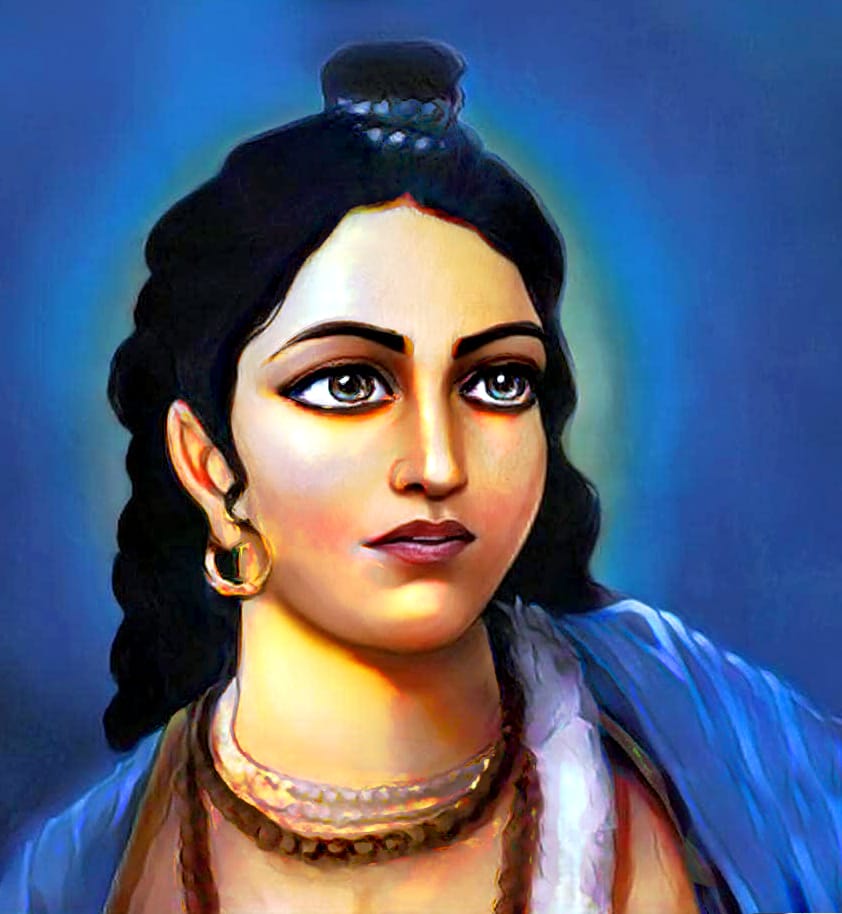
Service to Śrī Nityānanda Prabhu
kotodina thāki nityānanda khaḍadahe |
saptagrāma āilena sarva-gaṇa sahe || 443 ||
uddhāraṇa datta bhāgyavantera mandire |
rahilena mahāprabhu triveṇīra tīre || 449 ||
(Caitanya-bhāgavata)
When Nityānanda Prabhu came from Purī on the order of Mahāprabhu, he first went to Pānihāṭī and visited some other places in Bengal. Then, from Khaḍadaha, he came with all of his associates to Saptagrāma, which was a thriving and affluent settlement. He bathed at the Triveṇī Ghāṭa with all of his associates and then went straight to the house of Uddhāraṇa Datta and stayed there. Vṛndāvana Dāsa Ṭhākura describes Uddhāraṇa Datta’s service in Śrī Caitanya-bhāgavata (Antya-khaṇḍa, Chapter Five) as follows:
kāya-mano-vākye nityānandera caraṇa |
bhajilena akaitave datta-uddhāraṇa || 450 ||
nityānanda-svarūpera sevādhikāra |
pāilena uddhāraṇa, kibā bhāgya tā̃’ra || 451 ||
janma janma nityānanda-svarūpa īśvara |
janma janma uddhāraṇo tā̃hāra kiṅkara || 452 ||
With body, mind, and words, Datta Uddhāraṇa served Nityānanda’s feet with utmost sincerity. How fortunate Uddhāraṇa must be to have achieved the eligibility to serve Nityānanda Svarūpa. Birth after birth, Nityānanda Svarūpa is [his] master, and birth after birth, Uddhāraṇa is His servant.
This is echoed in Gaura-gaṇoddeśa-dīpikā by Śrī Kavi-karṇapūra:
subāhur yo vraje gopo datta uddhāraṇākhyakaḥ |
maheśa-paṇḍitaḥ śrīman mahābāhur vraje sakhā || 129 ||
The gopa named Subāhu in Vraja is now called Uddhāraṇa Datta. Vraja’s Mahābāhu sakhā is now Maheśa Paṇḍita.
And by Śrī Locana Dāsa Ṭhākura in Caitanya-maṅgala (reference needed):
kālā kṛṣṇadāsa āra uddhāraṇa datta |
dvādaśa gopāla vraje ihāra mahattva ||
Kālā Kṛṣṇadāsa and Uddhāraṇa Datta were glorious in Vraja as two of the Dvādaśa Gopālas.
Delivering the Disempowered
Vṛndāvana Dāsa Ṭhākura goes on to describe how the whole Baṇik community was purified by Uddhāraṇa Datta. “Of this there is no doubt,” he says. “Nityānanda incarnated to deliver the Baṇiks and gave them the qualification for prema-bhakti. He did kīrtana in every Baṇik home in Saptagrāma. Everyone was amazed to see the Baṇiks worshipping Kṛṣṇa. One could not in a hundred years describe all the kīrtana pastimes Nityānanda performed in Saptagrāma. The same joy that had flooded Navadvīpa, spread through Saptagrāma. Day and night, no one seemed to be thirsty, hungry, or in need of sleep. The whole town began vibrating with hari-saṅkīrtana. Even Muslims who had been taught to hate Viṣṇu took shelter at Nityānanda Prabhu’s feet. When the Brāhmaṇas saw the Muslims crying tears of devotion, they began cursing themselves.”
Śrīla Sarasvatī Ṭhākura comments in his Anubhāṣya on Caitanya-bhāgvata 3.5.453, 458: “Generally speaking, the Subarṇa-Baṇiks were poorly educated and mostly engrossed in dealing gold, so they were not well respected in society. They were referred to as the “avara-kūla” or lesser caste. There is no doubt that other lower castes, like the street-sweepers and others, were inspired by the example of Uddhāraṇa Datta and empowerd to shake off the racial prejudices they faced and become engaged in the worship of Hari.”
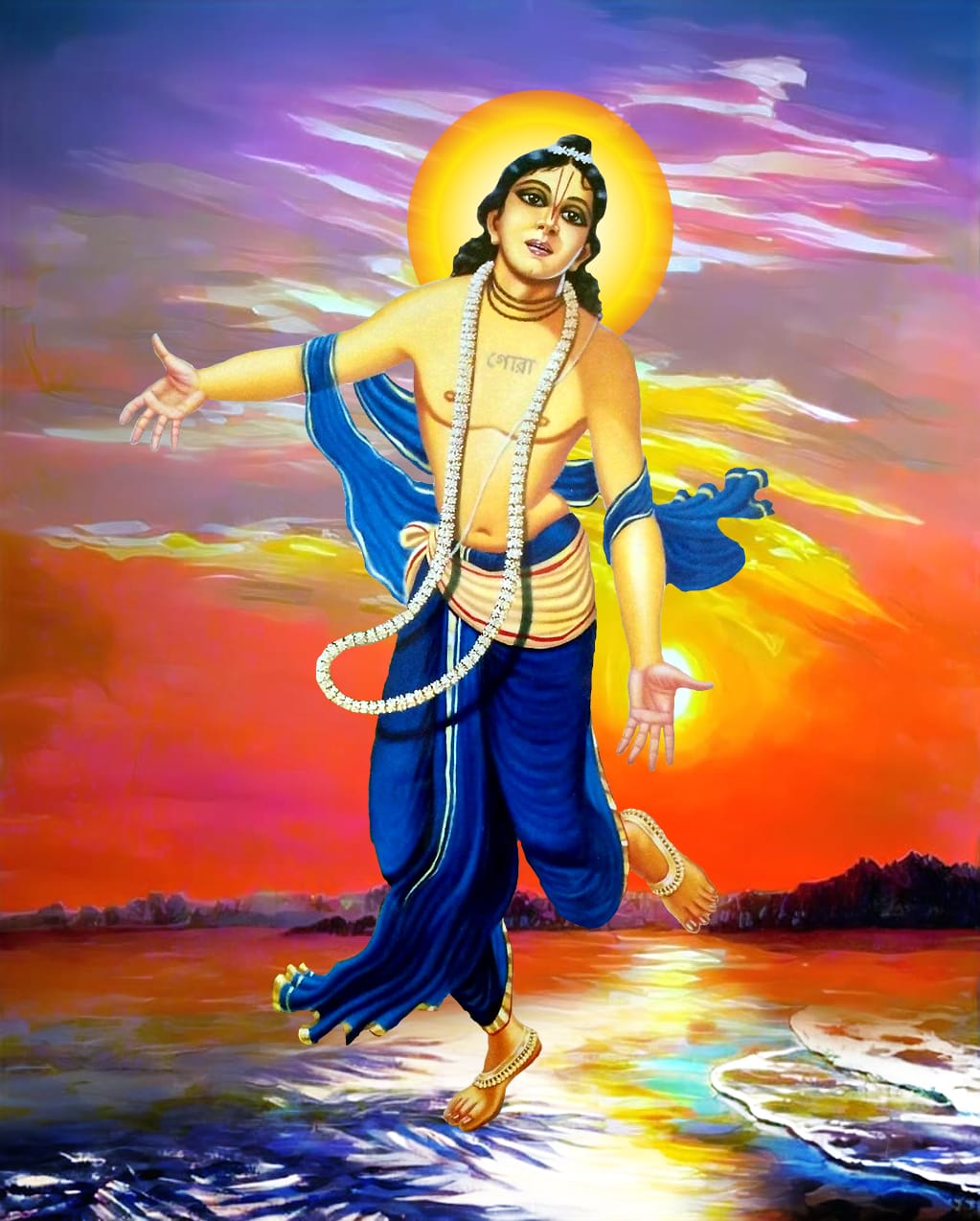
Cooking for Nityānanda Prabhu
In Nityānanda-vaṁśa-vistāra, which is attributed to Vṛndāvana Dāsa Ṭhākura, it is described how during the festivities leading up to the wedding of Śrī Nityānanda and Vasudhā, the local Brāhmaṇas one day asked Nityānanda Prabhu about a topic that is very important and often contentious for brāhmaṇas: his eating habits. “You have to go out to do bhikṣā every day, so do you cook for yourself or do you have a brāhmaṇa cook?”
Nityānanda Prabhu replied, “I sometimes cook myself, otherwise Uddhāraṇa takes it off the stove for me.”
When the brāhmaṇas showed their collective alarm at this, revealing their prejudice towards Uddhāraṇa Datta’s caste, Nityānanda Prabhu said, “This Datta lives in Triveṇī; he is a Subarṇa-Baṇik by caste, so I have no problem accepting his cooking.”
Some Subarṇa-Baṇiks make a big deal of this episode, but there is no real reason to. This interaction between Nityānanda Prabhu and the brāhmaṇas is not a reason to establish the vaiśya status of the Subarṇa-Baṇiks. Uddhāraṇa Datta was a supreme Vaiṣṇava, a parama-bhāgavata, a most saintly personality, the personification of purity, and had immaculate conduct. That is why Nityānanda Svarūpa accepted his cooking. They would take turns cooking. And when did this happen? When Nityānanda Prabhu was an avadhūta-brahmacārī, hence the repeated mention of Nityānanda Svarūpa [Nitāi's brahmacārī name] throughout Caitanya-bhāgavata where Uddhāraṇa Datta’s service to Him is described. There is no mention of Nityānanda Prabhu continuing this practice once He was married.
There is even an obviously forged verse attributed to Caitanya-bhāgavata that some try to purvey as proof of Nityānanda Prabhu accepting Uddhāraṇa Datta’s cooking in order to trump up their own vanity or somehow restore the vaiśya status of the Baṇiks. Nityānanda Prabhu was an avadhūta-sannyāsī, or brahmacārī, who had no consideration of caste in general, and beyond this, He had supremely pure spiritual relationship with Uddhāraṇa Datta, like a guru with his disciple.
There is even a growing legend about Nityānanda Prabhu convincing a brāhmaṇa to eat Uddhāraṇa Datta’s cooking by planting a wooden spoon in the ground that then instantly grew into a large mādhavī vine. Hārādhana Ṭhākura has spoken extensively on Uddhāraṇa Datta Ṭhākura, but never mentions this supposed incident. All he says is that it is said that one day Nityānanda Prabhu, after eating, planted a rice stalk there in the courtyard of Uddhāraṇa Datta’s home that then grew into the mādhavī vine.
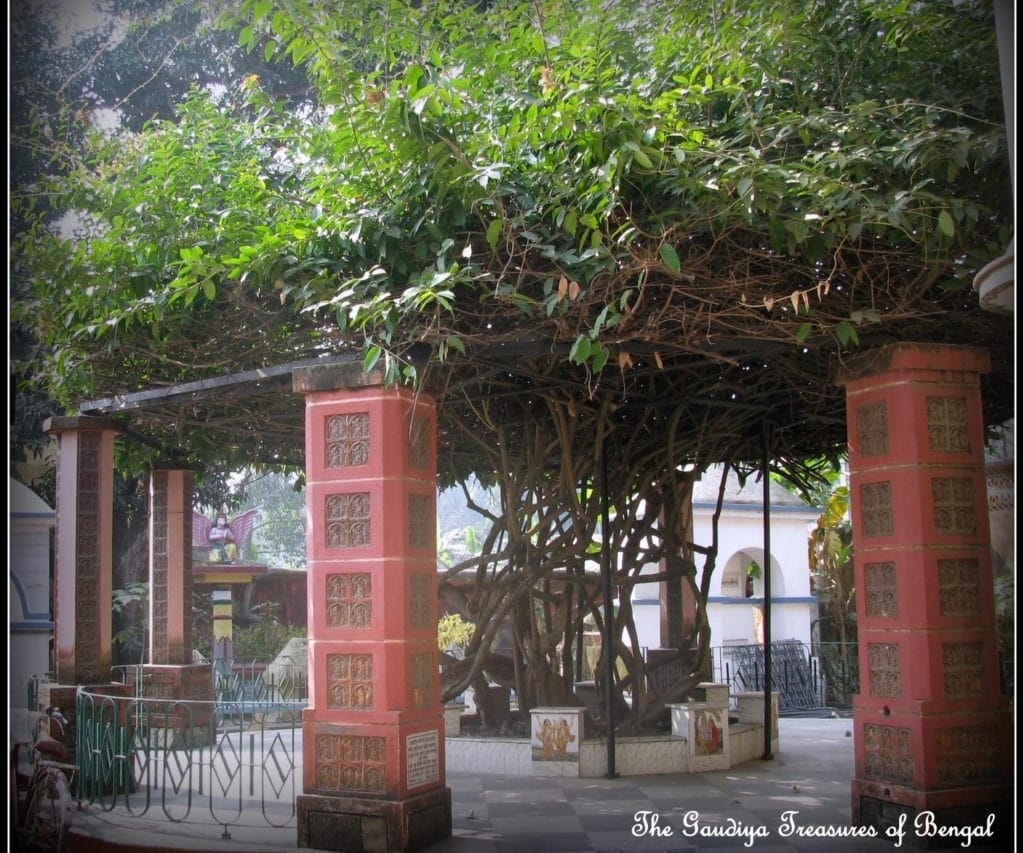
An Intimate Associate of Śrī Nityānanda Prabhu
When Nityānanda Prabhu went to Ambikā-nagara from Saptagrāma, he took Uddhāraṇa Datta with him as his servant. There Nityānanda Prabhu arrived at the doorstep of Sūryadāsa Paṇḍita and sent Uddhāraṇa Datta inside to infrom the paṇḍita of his arrival. Even though Nityānanda Prabhu had many associates and confidantes, it was Uddhāraṇa Datta who travelled everywhere with him. Supposedly he was the only one Nityānanda Prabhu brought to Ambikā-nagara to arrange his wedding with Vasudhā and Jāhnavā, which indicates Uddhāraṇa Datta’s status as an antaraṅga-parikara of Śrī Nityānanda Prabhu.
Caitanya-caritāmṛta (Ādi 11.41):
mahā-bhāgavata-śreṣṭha datta uddhāraṇa |
sarva-bhāve seve nityānandera caraṇa ||
Datta Uddhāraṇa was the greatest of mahā-bhāgavatas. He served Nityānanda’s feet in all respects.
Devakīnandana’s Vaiṣṇava-vandanā:
“uddhāraṇa datta vando hañā sāvahita |
nityānanda-saṅge beḍāila sarva-tīrtha” ||
With utmost attentiveness, I venerate Uddhāraṇa Datta, who roamed all the holy places in the company of Nityānanda.
Final Years and Samādhi
Mukunda Datta writes in his gāthā that Uddhāraṇa Datta Ṭhākura entrusted his family affairs to his son Śrīnivāsa Datta and renounced family life to go to Śrī Nīlācala and be with Śrīman Mahāprabhu. The devotees there were delighted to have Uddhāraṇa Datta join them, and he lived there simply, begging prasāda to meet his needs. Hārādhana Datta has said that Uddhāraṇa Datta was around 48 years of age when he renounced household life. He spent six years in Nīlācala and then, for another six years, lived in Śrī Vṛndāvana, where he disappeared from this realm on the kṛṣṇa-trayodaśī of Pauṣa. According to Hārādhana Datta, his samādhi is near Vaṁśī-vaṭa in Vṛndāvana. It seems some of his devotees or associates established a samādhi shrine dedicated to him at his home in Saptagrāma.
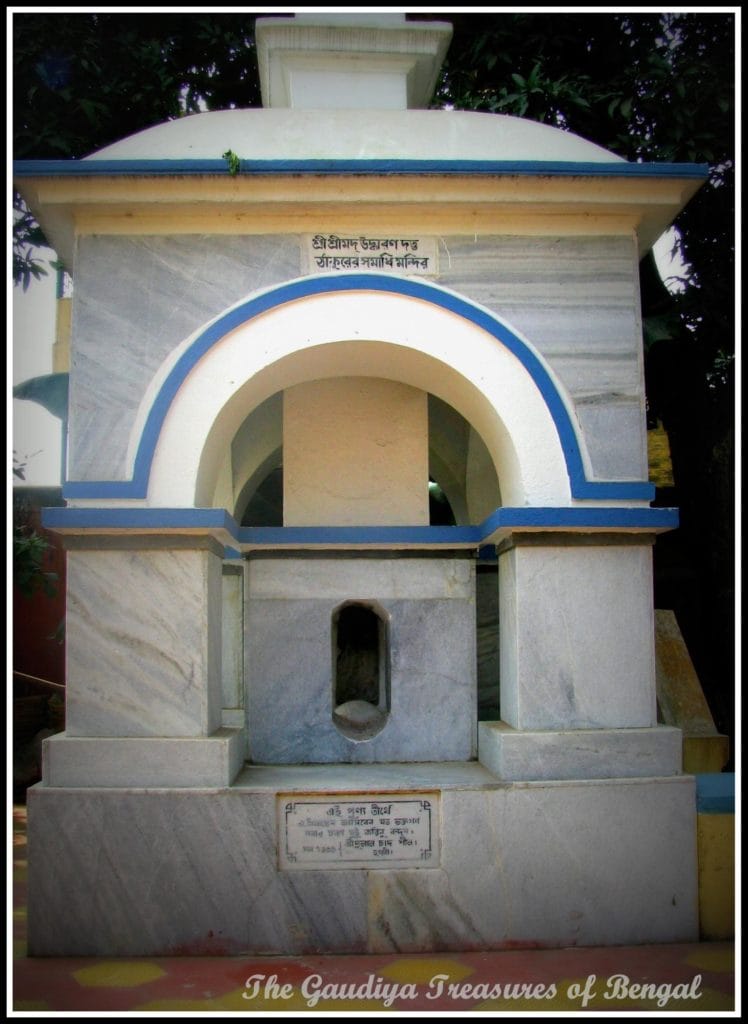
Narottama Weeps for Datta Ṭhākura
Bhakti-ratnākara (8.199–203) describes Śrīla Narottama Ṭhākura’s visit to Saptagrāma:
nityānanda guṇe magna datta uddhāraṇa |
nirantara seve nityānandera caraṇa ||
Datta Uddhāraṇa was captivated by Nityānanda’s qualities. He served Nityānanda’s feet incessantly.
hena uddhāraṇa ṭhākurer saptagrāme |
narottama praveśe vihvala haye preme ||
Narottama entered the Saptagrāma of this Uddhāraṇa Ṭhākura and became overwhelmed with prema.
loke jijñāsaye uddhāraṇa dattera ālaya |
kariyā krandana keha kahe ei haya ||
He asked people where the home of Uddhāraṇa Datta was. Crying, someone said, “It’s this way…
prabhura viccheda duḥkha dagdhi anukṣaṇa |
ei koto dina haila hailā saṅgopana ||
“He was burning incessantly in separation from [Mahā-] Prabhu. He disappeared just some days ago.”
tāra aprakaṭe saptagrāma andhakāra |
śuni narottama netre bahe aśrudhāra ||
“Now that he has disappeared, Saptagrāma has darkened.” Hearing this, a torrent of tears began to flow from Narottama’s eyes.
hailā vyākula jaiche kahana nā jāya |
prabhu-priya ye chilena mililā tathāya ||
He became anguished in a way that cannot be described. He met with those dear to the Lord who were there.
Śrī Uddhāraṇa Datta Ṭhākura’s Śrīpāṭa
Datta Ṭhākura’s śrīpāṭa is situated in Saptagrāma, just over a mile away from the birthplace of Śrī Raghunātha Dāsa Gosvāmī in Śrī Kṛṣṇapura. There, in a beautiful, tranquil temple, is a deity of Ṣadbhuja Mahāprabhu that was installed and worshipped by Datta Ṭhākura. To the right and left of this deity are Śrī Nityānanda and Śrī Gadādhara. There are also a hundred and eight Gopāla deities being worshipped here. In the courtyard is a huge mādhavī vine that is over five hundred years old. The walls of the temple are lined with marble plaques of various Datta, De, and Mallika families, and others who have contributed to the temple.
